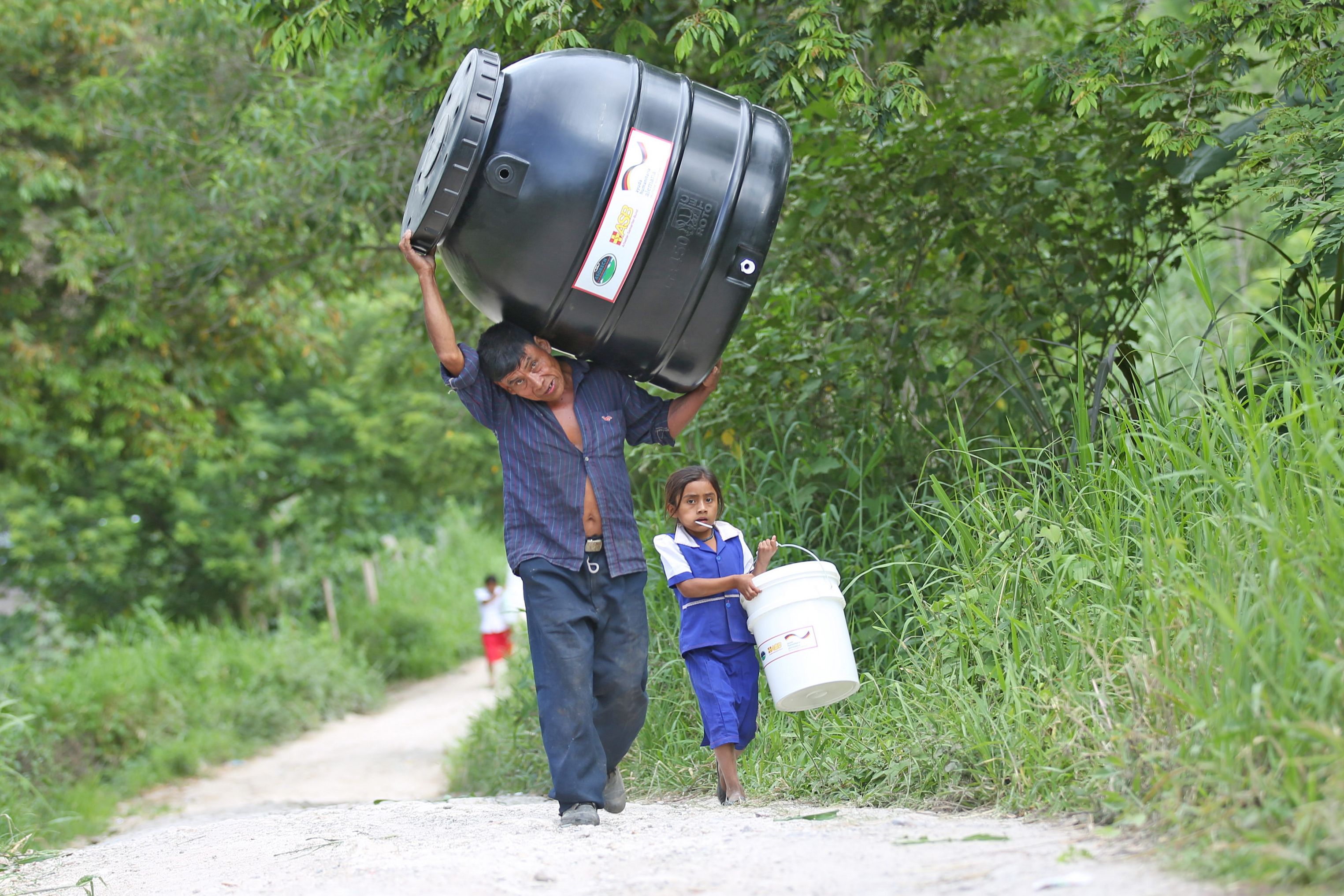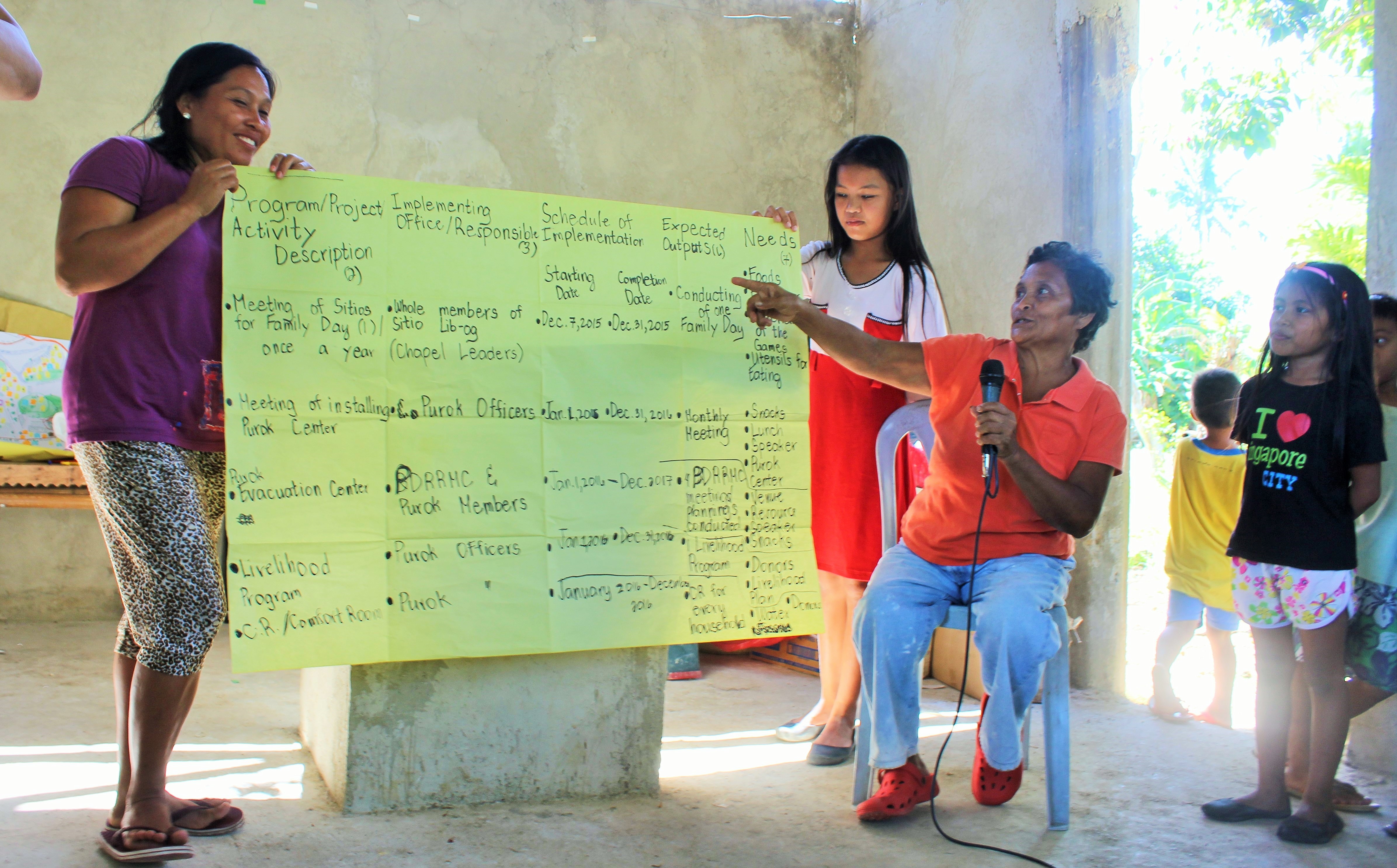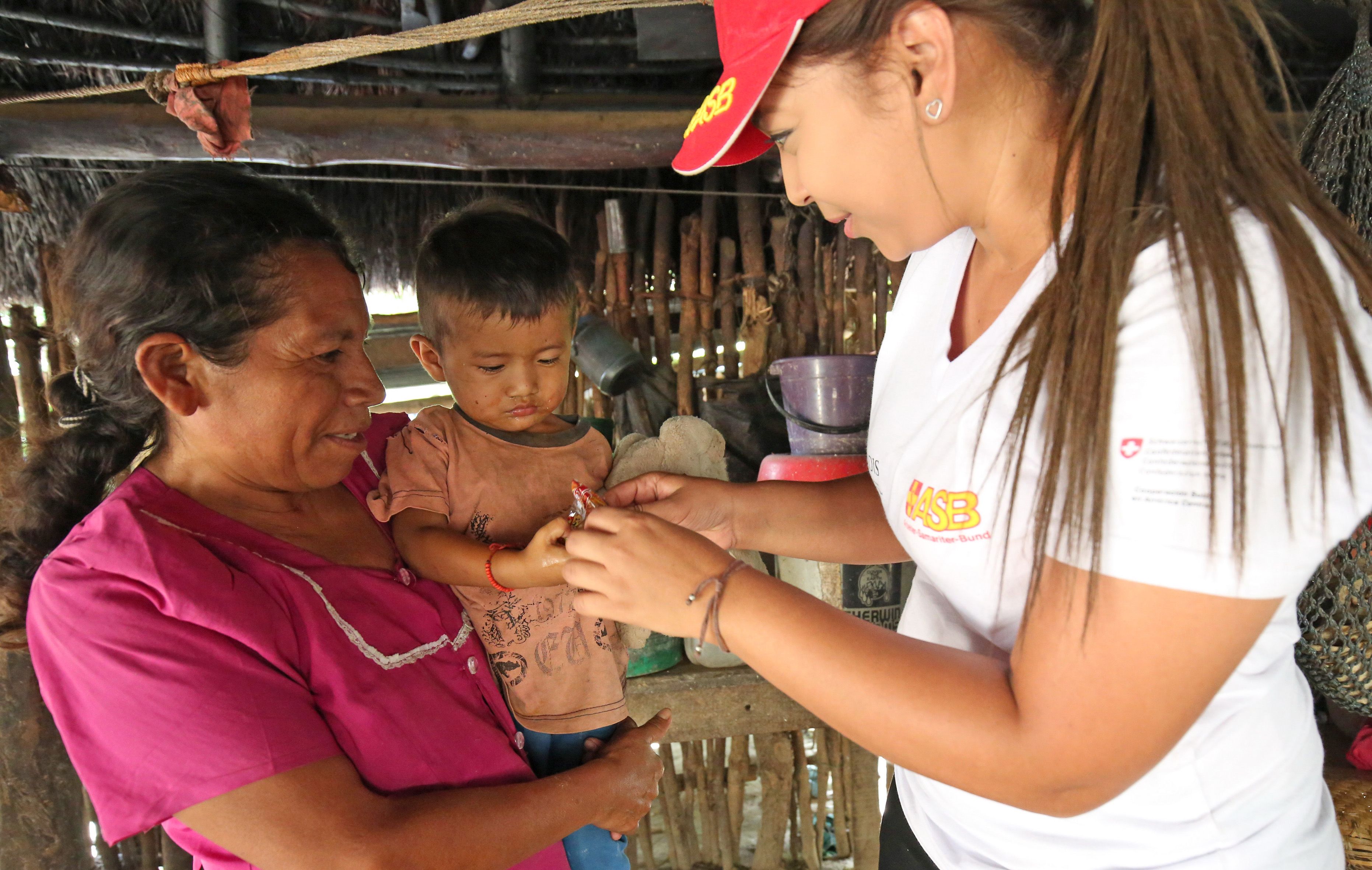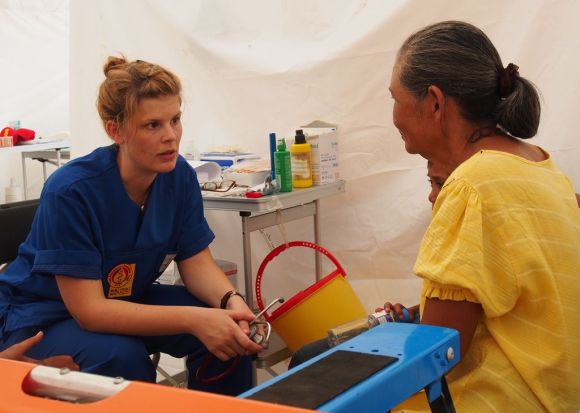
Judith knows how to help herself

How do the people of Somosa want their coexistence to look like in the future? Judith Cruz and the other villagers draw up plans for disaster risk reduction and joint activities.
Photo: ASB Indonesia and PhilippinesJudith Cruz is one of 76 people with disabilities living in the small village of Barangay Somosa, which is part of the municipality of Tabogon. The 63-year-old was left unable to walk after suffering from polio as a child. Judith Cruz rarely attended the community meetings in the centre of Somosa where village issues are discussed. “The meetings take place very far away. It’s too hard for me to get there,” she says, giving her reason for staying away. She also stopped attending meetings of the local disability advocacy organisation. Internal disputes took away her desire to get involved. The organisation had pretty much disbanded.
Lack of knowledge about how to act in disasters
Judith lives with her husband Edgardo who is five years older than her and who has a visual impairment. The two live together in a small settlement away from the village centre. Cebu Island, on which Somosa is located, was hit hard by Typhoon Haiyan in 2013. The strong wind blew away the older couple’s roof. During the storm, the two crouched helplessly on the floor of their wooden house. Neither of them had ever received instructions on how to get to safety.
The ENABLED project aims to better involve people with disabilities in community disaster risk reduction. The first meetings took place in a chapel in the middle of the small housing estate in which Judith and Edgardo Cruz also live. Of course, she took part in the meetings: “I am happy that they think of us when it comes to where the meetings take place. They are now held very close to our house.”
What do people need to protect themselves?
During the meetings, Judith and the other participants identified all the buildings of the village in which people with disabilities live. They considered what equipment they would need in the event of a disaster, and they set out safe and accessible evacuation routes for everyone. In an emergency, these arrangements provide a valuable basis for ensuring safety for people with disabilities, but also for the elderly.
The change is good for the older lady. She now expresses her ideas openly in the meetings. She has also campaigned for her local self-help organisation to be reunited. And with success: the infighting has settled down. The initiative has since drawn up statutes and is represented by a seat on the municipal council. There it is campaigning for the rights of all disabled citizens.
The community is still only starting out when it comes to the inclusion of everyone in community life. But this is a promising start: “We will certainly leave the house when the next typhoon comes, now we know the procedures in place,” says Judith with a smile. “Now we are even able to help others.”


